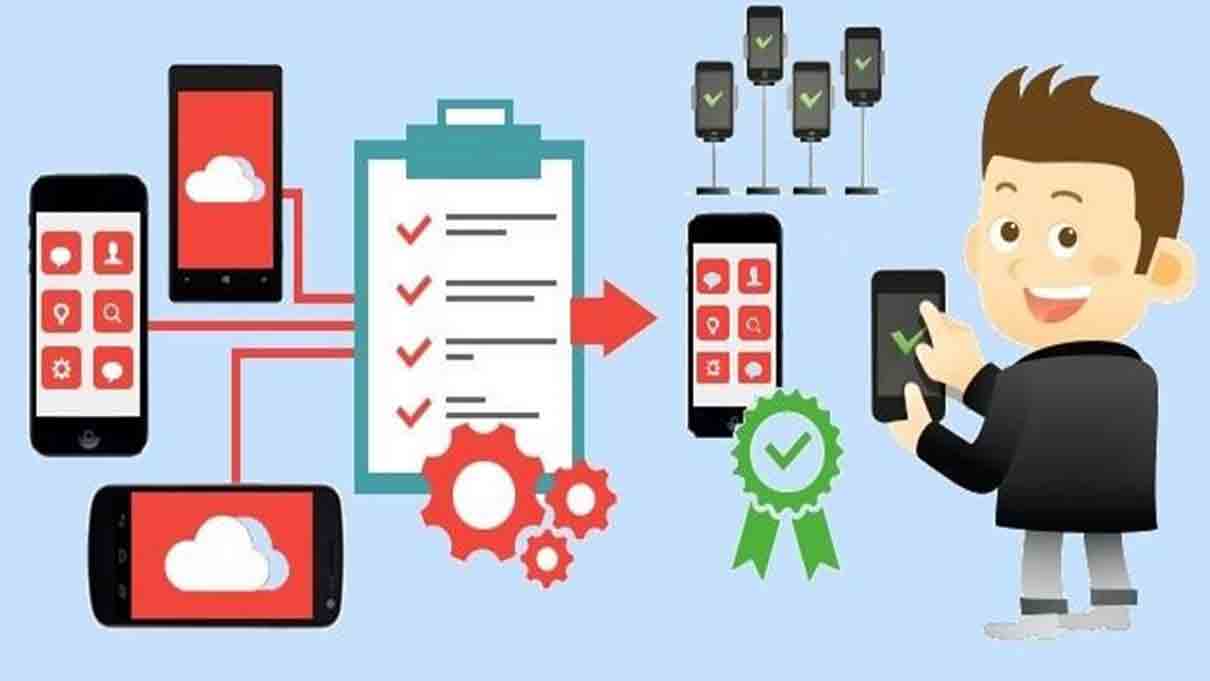6 Factors for Choosing Smartphone Testing Devices
6 Factors to consider when choosing smartphone testing devices. The massive growth of handheld devices, especially smartphones, has increased the convenience with which users can access a service with minimal exertion. Mobile applications are packed with brilliant features and excellent utilities, and it is enabling business owners to add value, improve sales, provide quality customer service, and optimize their efficiency.

However, studies reveal that most of the apps fail to impact the marketplace, and 80-90 percent of mobile apps launched in the app stores are abandoned just after a single-use. The main reason for the app’s failure among the users lies in the process of mobile app testing process. A robust mobile app testing methodology enables developers to address the performance gaps at early stages, identify gaps, and test how they will perform in real-world scenarios. Mobile Application Testing enables enterprises to build scalable and user-friendly applications.
A comprehensive mobile app testing strategy includes multiple stages, such as testing the functionality, usability, UI, compatibility, performance, certifications, beta, localization, recovery, and security aspects. The best mobile testing devices allow you to test the app on different OS versions and hardware. It also enables you to re-run the test scripts as many times as you want so that the app can deliver optimum performance.
One of the most challenging tasks in smartphone application testing is determining what devices you should purchase for testing and how to increase the test coverage. This type of testing is performed to get assured about the quality of a mobile device.
Here are six things you should consider while choosing Smartphone testing devices.
OS And OS Versions
To ensure that your app supports various platforms, it is necessary to test your application on different OS and their versions. Your developers and QA must test the app OS versions and take into account all significant changes. It is imperative to acknowledge the wide range of operating system versions and devices in use to perform app testing. If you simply focus on a single platform, it will significantly narrow your market share and bring down your new markets’ reach.
Testing the app on different platforms, including other devices, operating systems, and OS versions helps compare and analyze the app’s behavior in different environments. With this, your app will deliver an optimal user experience, independent of the OS, which is used to access the app. Select an app testing tool that enables you to run your test scripts across different OS versions and supports the reuse of test codes to efficiently test the app’s functionality and design without the need to recreate the test scripts for each OS version.
Screen Size And Resolution
The mobile devices are available in different sizes and resolutions. Hence, the testers need to consider the screen size of the devices to test the UI compatibility. The smartphone app testing tool should help the developer efficiently perform backwards and forward compatibility testing for their apps. Additionally, you also need to decide on the supporting device families like Mobile Devices, Tablets, iPhones, iPad, iPods, and more to increase the test coverage.
Hardware
While selecting a device to check your app’s performance, you need to take several attributes into accounts, such as screen size, resolution, PPI, and other hardware features. You need to check the disk space and data your app consumes.
The processing power of different devices can differ significantly, which can affect the performance of your app. Besides software platforms and OS versions, mobile applications need to be tested with diverse hardware. Many times apps have specific hardware requirements like memory, camera, and CPU. It is observed that an app tends to run slow or crashed on the device with less memory (RAM) but can perform smoothly on devices with more memory. Hence, you need to carefully consider your hardware requirements to select a device for app testing.
Analytics
Using an appropriate analytics tool will help you figure out and gather user data to determine your application’s customer base. It enables you to understand your end-users demographics, age, gender, and other such attributes. From this data, you can analyze who visits your application and on what kind of mobile device. You can also gather additional data about the service provider, operating system, mobile brand, and screen resolutions, using the analytics feature that will help you to select the right device for smartphone testing.
Device Features
You need to determine the device features and sensors on which your application relies extensively. Identifying sensors and sensor capabilities at runtime are useful if your app has features that depend on specific sensor types. You can look for certain features like GPS, camera, Bluetooth, fingerprint sensor.
Scalability
While selecting a device to test your mobile app, you need to consider the types of devices and features coming shortly. It will help you to make sure that the app can support such advanced features without faltering.
To Conclude:
You need to ensure that your app works seamlessly on mobile devices of various OS versions and configurations. Hence, you need to develop the right smartphone testing strategy, covering a wide range of devices.






